How do different rates of weight loss affect athletes?
Without fail, most people I have talked to think they’re experienced in the gym. While that may not be the case, I want to take a moment to indulge such folks. I promise that everyone will benefit.
In most cases, including the ones we’ve discussed (here, here, here, here), the participants in weight loss studies are newbies. Anyone who has lifted for a while knows that the newbie experience differs from the veteran’s. In fact, researchers exploit the larger effect in newbies in order to better capture phenomenon that is otherwise minute and difficult to measure. That leaves open the question though, what happens in experienced folk?
Today, we’ll tackle this question for weight loss while lifting. A common concern among veteran lifters is that rapid weight loss could come, in part, from muscle loss. This study looks at the effects of two different rates of weight loss in athletes who lift weights. Let’s see what happens!
Methods
The study lasted up to 12 weeks. There were 11 male and 13 female participants. All of them were recruited through the Norwegian Olympic Sport Center. They had at least 11 years under their belts in their given sport. Throughout the study they maintained their training schedules, which was roughly 15 hours a week. All of them reported experience lifting weights, averaging a reported 3 hours of lifting/week in season.
The participants were split into 2 groups: the “slow” weight loss group and the “fast” weight loss group. Everyone’s goal was to lose at least 4% of body weight. The “slow” group targeted a rate of no more than 1 lb/week weight loss and the “fast” group targeted ~2 lbs/week. This was achieved by having customized plans for each participant. As athletes, they had nutritional plans to ensure not just calorie targets but also protein and carb targets. They needed to make sure they recovered for their sport. Everyone had a protein/carb drink right after training, as well as a multi-vitamin & fish oil to help in that regard. They all met with study nutritionists once a week for counseling.
Everyone followed a standard training program and worked with a study trainer once a week. They lifted 4 days/week in total. Two days hit their upper bodies and two days hit their lower bodies. Below are the schedule of the lifts and intensities. The “fast” group did not spend as much time in each of the intensities because of their shorter time to weight loss.
At the start of the study, they had their body weights and heights measured, DEXA scans for body composition, and performance tested (1RM bench/row/squat, 40m sprint time, countermovement jump height).
Below are the starting descriptive stats for the participants. As always, they’re group averages and rounded to the nearest whole number for the ease of viewing.
Results
On average, the “fast” participants took 5.3 weeks and the “slow” participants took 8.5 weeks to lose ~9 lbs. While the scale weight loss was basically the same for the groups, their body compositions were very different by the end. The “slow” group lost 11 lbs of fat and gained 2 lbs of muscle, whereas the “fast” group lost 7 lbs of fat AND lost a lb of muscle!
The gainz achieved by the “slow” group were specific, too. They were primarily in the upper body. Their leg muscles did not change by the end of the study.
There was no correlation between participants’ fat level at the start of the study and how much their muscle changed by the end.
Those results were for both sexes combined. When analyzed separately, there were sex differences. The females actually gained 1.8% muscle whether they lost weight quickly or slowly! The males, on the other hand, only gained 2% muscle in the “slow” group. The quicker males lost 2% muscle!
Below is a chart of the calories for the groups. The “slow” group cut their calories by 469 and the “fast” group cut their calories by 791. Given their training, the researchers noted that the participants are under-reporting their calories. That’s expected (e.g.: this, this, this, this, this, or this), just more pronounced in a study of athletes who train a lot.
For the protein enthusiasts in the crowd, the “slow” group ate an average 122g/day and the “fast” group ate an average 104g/day. That’s ~0.73g/lb of bodyweight (relevant to this discussion).
Statistically, the only performance difference between the “slow” vs “fast” groups was the bench press. The “slow” group improved by 17 lbs, as opposed to 5 lbs in the “fast” group. Otherwise, both groups improved to some degree such that neither group outperformed the other. Both sexes improved equally in everything except the squat test. Males of either weight loss speed increased their squat by 5% while the females increased their squat by 16%.
Thoughts & Implications
The 80/20 idea of weight loss comes up again. We discussed this last week. This study shows how the 80/20 idea is more complicated than at first glance. The weight loss during this study was less than 10% of bodyweight and that produced closer to 100% fat loss. Complicating matters, this study shows that athletic folks can expect different results based on how fast they lose weight and whether they’re male or female.
One obvious difference between the speed groups that can be a driving factor in their differing results is the energy deficit. The “slow” group had a 19% deficit while the “fast” group had a 30% deficit. Additionally, the slower group trained for an average of 3 additional weeks. More time training will undoubtedly benefit body composition when losing weight.
I appreciated the regional analysis of the results, as we have discussed (here & here) how that matters. The change in the upper body muscle drove the results in this study. Many studies have found the same situation, especially in trained/athletic folks. The legs receive training in almost every sport. To some degree, they’re tapped out by the time an athlete gets to these studies. They would need to do extensive training to produce the same results in their legs as their upper body.
The researchers explained that the body of research on performance results is mixed when comparing athletes from different sports.
Plain & Simply
The previous journal club showed that newbies can utilize weight lifting and exercise to their benefit when losing weight. They can be confident that they’re getting good body comp results. Already athletic folks who want to lose weight face a different situation, though. If they want to gain strength and/or performance while leaning out, they should not lose more than 0.7% of their bodyweight per week (~1 lb). If they just want to maintain their strength/performance as they lean out, then they may be able to get away with losing up to 1.4% of their bodyweight per week (~1-2 lbs). Driving down the scale quicker than that is not likely to produce desirable results. Women may be able to get away with that to some degree, but that may depend on their lifting experience. As they become more advanced, they too may face the same situation as men.
Concerns about losing muscle in preparation for the annual beach season are real…
If you have any questions about this study or anything I said, please feel free to leave a comment. I will get back to you and others may have insight to offer, too. If you have any questions or topic suggestions that you would like answered as a post, then please email me at robert@analyticfitness.com.
Don’t forget to like Analytic Fitness on Facebook, or follow me on Twitter or the other social medias!

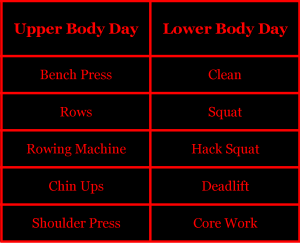
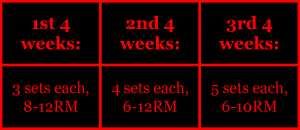
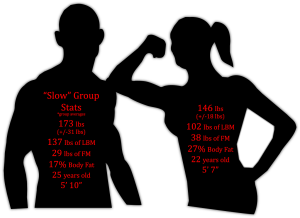
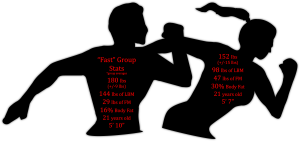
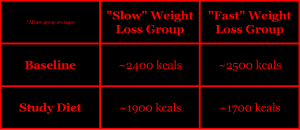




POST REPLY